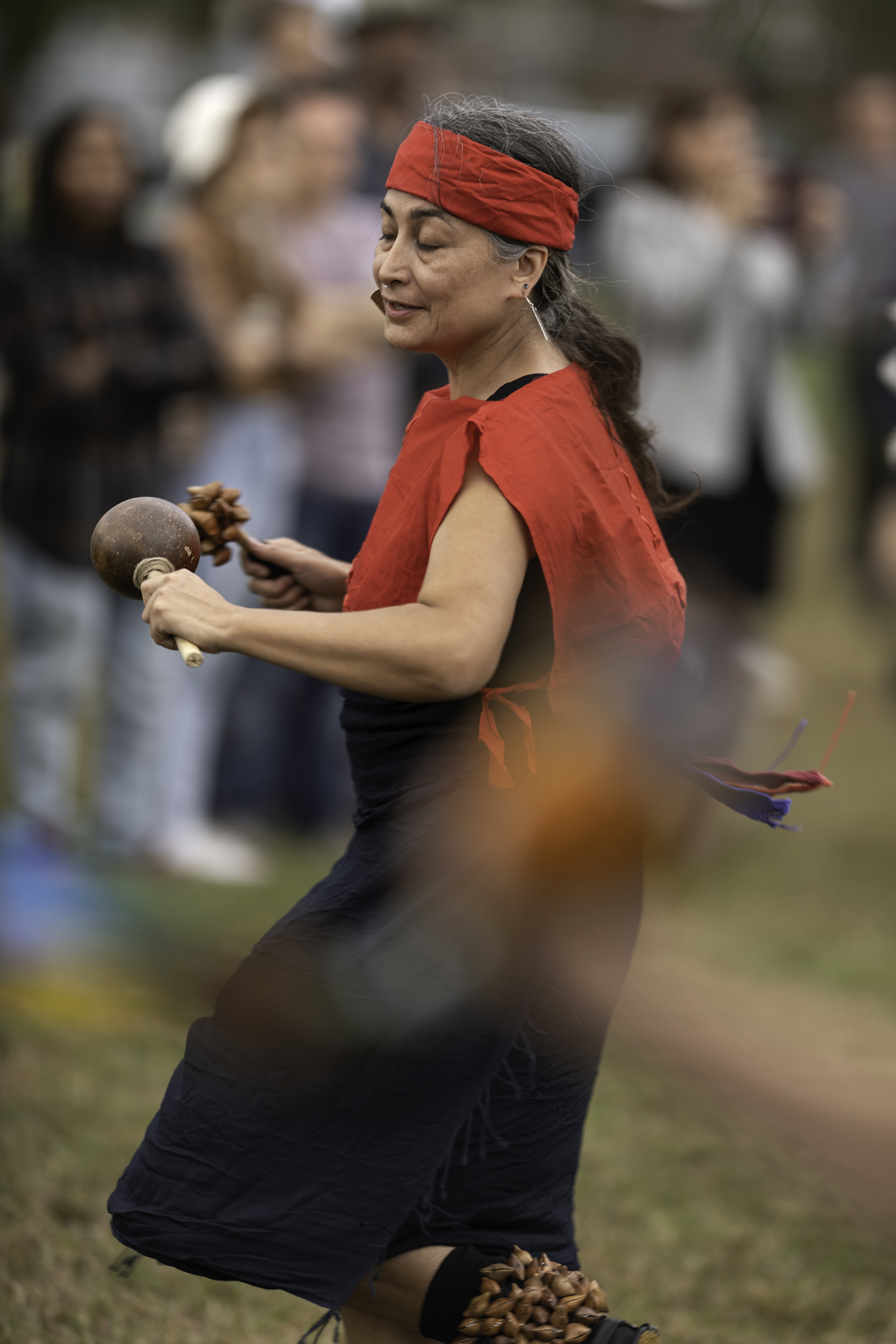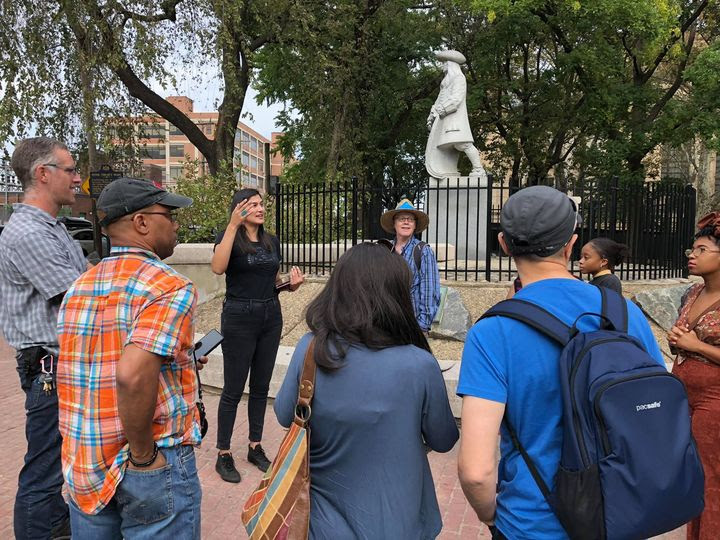This past January, the city of Philadelphia announced that it will change Columbus Day to Indigenous Peoples' Day beginning 2021. Mayor Jim Kenney signed Executive Order 2-21 on January 27, with the first observation coming on the second Monday of October. The decision was abrupt with hardly any build-up to the signing. The city took a step towards this last summer with a significant push from the Philadelphia Art Commission to remove the Christopher Columbus statue from Marconi Plaza in South Philadelphia. Violent clashes sparked between opposing groups, as supporters of the Italian figure clamored for the preservation of the statue. The removal was a tumultuous process, but a successful one in its own right, and set up a segue into the changing of Columbus Day. Still, that change was made without the involvement of the area’s Indigenous residents, revealing a much bigger problem the city has on its hands. How can it continue to make decisions for a community without involving the community?

It wasn’t brought to light until an interview with Mabel Negrete, executive director and co-founder of Indigenous Peoples' Day Philly Inc. (IPD Philly), an organization comprised of artists, artisans, activists, healers and thinkers from Native American/Indigenous groups in the city, that they weren’t involved in the conversation. “The city made the decision to pass an executive decision,” Negrete said, “it was challenging that they didn’t include the indigenous community. Because, oftentimes, they recognize who were the people behind this movement.” This is one of the first things Negrete mentioned in a call with Monument. It was that simple to start a conversation about it, and the city failed to make that little effort. This is alarming—it’s not just about one day out of the year.

“It was a pleasant surprise yet I am also concerned that, to my knowledge, there is very little outreach to the Lenni-Lenape nations who are still living in the Delaware Valley as well as in Diaspora and whose territory we occupy,” said Priscilla Bell Lamberty, an artist born and raised in Lenapehoking who is Black and Indigenous Carribean and works with Indigenous 215. “There is also no outreach to the other Indigenous/Native/First Nations communities living here in Lenapehoking and if there is someone working with the city, it is unknown to many of us in the Intertribal communities residing here.” This isn’t anything new.
Negrete talked about how other groups have been trying for more than a decade to begin the shift, including looking for the removal of the name of Columbus Boulevard, a major north-south thoroughfare that saw its name changed from Delaware Avenue in 1992 despite controversy. Lamberty noted that there was a resolution that was presented to the Pennsylvania House of Representatives (no. 861) that would recognize Indigenous Peoples' Day in Pennsylvania, but “it went largely unnoticed by non-Native communities.”

Conversations about Native peoples aren’t integrated into key formative outlets, including education. Stephanie Mach, an IPD Philly co-founder who also is the Academic Coordinator at Penn Museum, notes that when people come to the museum to see exhibits or events that discuss and illuminate Native American experiences, it’s only ever younger kids. Lamberty added to this, asserting that “we need to include Lenni-Lenape/Native American history in Philadelphia schools. We also need to teach the real history of Columbus’ landing and the fact that Indigenous Carribean (Taino, Kalinago, and Garifuna) [folks] are alive and well and have 529 years of resistance and resilience.”
Passing a resolution to make it mandatory to implement curriculum for Native American studies is a first step. Going further, Mach suggests that there needs to be more effort in bringing more critical attention to the comparisons of colonial history and tribal history, more Native voices need to be authoring, speaking, and teaching these curriculums, and creating more sustainable organizations that can provide services and resources.

Simply changing a day on the calendar without announcing intention or plans to begin this sort of integration is telling. Trinity Norwood, the Secretary of Board of Directors of IPD Philly and a citizen of the Nanticoke Lenni-Lenape Tribal Nation in New Jersey, cautions that “a lot of these cities are changing Columbus Day to Indigenous Peoples' Day, then patting themselves on the back, and then going on with their daily lives, and that’s not making a change.” While Norwood admits she’s excited about the change, she wants it to be a tool to make change happen, and urges that Native peoples can’t be the only ones changing. “It has to be a city-wide change, it can’t fall on our shoulders. We’ve been tampered down and ignored for so long.”
The city, and the state of Pennsylvania, needs to elevate its inclusion of Natives on an official level. “Pennsylvania is one of the few states that has no state or federally recognized nations,” Mach said. “But that doesn’t mean there are no Native Americans living in Pennsylvania.” According to the US Census Bureau, as of 2019, there are over 24,000 Native Americans in Pennsylvania, nearly a fourth of them living in Philadelphia. Few states recognize tribes—tribes that are federally recognized are eligible for funding and services from the Bureau of Indian Affairs.
On its own, the state lacks resources. “On several occasions, there were Native seniors from Federally Recognized nations living here who contacted Indigenous 215 to ask for help to find health care and other services, and the closest American Indian Health Center is in Baltimore, Maryland,” Lamberty said. She was also critical of many nonprofit organizations, claiming that they are woefully lacking in servicing and acknowledging Native and Indigenous folks who live and migrated to the area. Non-Native Americans have a general lack of seeing any more of the spectrum of identity for Natives. “Many folks coming from Central and South America do not speak Spanish or English, they speak their Native language like Quechua or Nahuatl for example,” Lamberty added. “They are forced to conform to identifying as Latino because of the country of origin.” She lamented that nonprofits, schools, and government entities sometimes only recognize Native folks for superficial or entertainment reasons.

The superficial is evidenced by the decision to change the date while not including Native voices in the conversation. There is more work to do than changing a calendar holiday (especially considering that there’s still Thanksgiving). Removing the Columbus statue in South Philadelphia is another superficial move. The city and the state, like many others in America, needs to do extensive work in providing resources for Native American organizations, mandating educational curriculum, and connecting with tribes in local regions. On a grassroots level, that looks like invitingIndigenous voices to speak or work with organizations, self-education, calling out and speaking against discrimination and historical innaccuracies, and following groups like Indigenous 215, IDP Philly, We Are the Seeds, and Juntos, and making monetary contributions if possible.
Indigenous People of the Americas are not a monolith, as Lamberty pointed out. With varied customs, cultures, and histories, they’ve long been misunderstood, mislabeled, and not included in conversations that impact them. For Indigenous communities to thrive, non-Native people have a responsibility to include and integrate them into their lives: their curriculum, their conversations, and their work. Including more Indigenous voices in organizations and policy-making, hiring more Indigenous people, and being mindful of their communities’ needs through activism, advocacy, and self-educating. Attending panels, meeting with community leaders, supporting Indigenous art and organizations, and unpacking racial biases are also critical. Just taking off a Monday in October is hardly enough.
